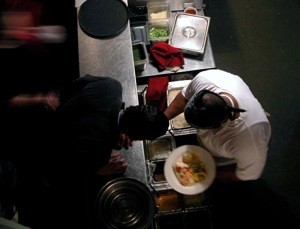5 important Health and Safety measures for restaurants
In the world of hospitality, restaurants are one of the most popular destinations for any food lover…or even those who just aren’t in the mood to cook a meal.
Given the myriad potential health and safety pitfalls that comes with handling, preparing, cooking and serving food, restaurant owners and staff need to be mindful of several important health and safety measures. In today’s article, we’ve listed 5 measures in particular that we believe are imperative to observe and practice.

1. Keep your kitchen clean
Yes, this is a very obvious suggestion, but not enough can be said of the importance in maintaining the cleanliness of your restaurant’s kitchen. It is where almost all food is stored, prepared and cooked, and any unhealthy bacteria or dirt and grime can cause a world of issues. And this isn’t just in terms of it potentially contaminating the food and snacks you serve patrons; an unhygienic kitchen can also be a huge health risk to employees.
2. Wash hands
While some may consider those who wash their hands after touching anything and everything to be a little over-the-top, such a practice cannot be more highly encouraged and expected than in a restaurant. When handling food, your hands need to be clean and as sterile as possible. Some fast food joints may use gloves, but many restaurants these days still don’t necessarily require chefs to wear gloves. But when food handling and preparation is involved, that means you need to make a concerted effort to keep your hands clean and as germ-free as possible at all times.
3. Proper storage
The majority of meats and vegetables you deal with can be stored in freezers until you need to use them. Produce is regularly ordered and delivered at restaurants, so the amount of time your goods remain refrigerated/frozen is usually going to be shorter than when someone buys such goods for themselves. Still, make sure that you are properly storing all goods to avoid the growth of bacteria. If any of your goods are reaching the end of their usability, then you will need to dispose of them, no questions asked.
4. Safety equipment and practices
Health and safety isn’t just about the kitchen, it’s also about ensuring the premises itself has all the necessary safety equipment in the event of an emergency. Do you have sprinklers installed in case of a fire? What about an actual fire extinguisher? What’s your evacuation process? Is your restaurant wheelchair accessible? These are just a few questions out of many you need to ask yourself. If you don’t have an answer to them that equates to “this restaurant is safe”, then you need address any outstanding issues ASAP.
5. Avoid cross-contamination
Returning back to food preparation, cross-contamination is a massive issue. Do you remember as a kid your mother telling you that you should never cut up vegetables on the same cutting board you just cut up raw meat on? Well, that was because of the very real issue of cross-contamination. Such contamination can cause food poisoning or even worse health outcomes. You need to have allocated cutting boards, frying pans, pots, etc. that are devoted to different functions. But most importantly, keep an eye on what you’re doing and never mix up your raw food with other foods.
What other restaurant-related health and safety measures do you think deserve a mention? Add them to the discussion by leaving a comment below.